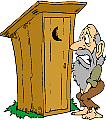I just got the Respironics M-Series Auto with C-flex with the Encore Pro SmartCard and I had some questions I hope you guys can help me with:
1. How do I change the pressure range on my APAP? I have seen multiple posts on this forum with users saying they've modified their pressure range themselves and wanted to do this myself. Also my C-flex is disabled, is there a way to enable this without going to my DME?
2. I'm not sure the machine is working properly. It doesn't seem to adjust the pressure as I would expect. I tried holding my breath, breathing very shallow and it won't do anything. The only thing that it seems to respond to is a mask leak. Is this normal?
3. Do APAP's respond to RERA's or only apneas and hypopneas? And does the software monitor RERA's?
APAP
You should find the complete set-up manual here. Change to your hearts desire.
http://www.cpap-supply.com/Articles.asp?ID=130
http://www.cpap-supply.com/Articles.asp?ID=130
_________________
| Humidifier: HC150 Heated Humidifier With Hose, 2 Chambers and Stand |
| Additional Comments: 11cm/H2O, Encore Pro 1.8i, Pro Analyzer, Encore Viewer1.0 - 3 Remstar Pro2's, 1 Remstar Auto |
Life's journey is not to arrive at the grave safely in a well preserved body, but rather to skid in sideways, totally worn out, shouting: "Wow what a ride!"
I still play Cowboys and Bad Guys but now I use real bullets. CAS
I still play Cowboys and Bad Guys but now I use real bullets. CAS
- rested gal
- Posts: 12880
- Joined: Thu Sep 09, 2004 10:14 pm
- Location: Tennessee
Re: APAP
The link 6PtStar posted will lead you to the info about how to access the Set Up menu.robc737 wrote:I just got the Respironics M-Series Auto with C-flex with the Encore Pro SmartCard and I had some questions I hope you guys can help me with:
1. How do I change the pressure range on my APAP? I have seen multiple posts on this forum with users saying they've modified their pressure range themselves and wanted to do this myself. Also my C-flex is disabled, is there a way to enable this without going to my DME?
That's normal for an autopap to not change pressures while you are awake and trying to emulate apneas and hypopneas. I don't mean that the machine knows if you are awake or asleep...it has no way of knowing that. What I mean is that autopaps are designed to NOT yoyo pressures up and down abruptly. What might seem like an uncomfortably long time for you to consciously hold your breath might not be long enough to cause the machine to make a change quiiiite yet.robc737 wrote:2. I'm not sure the machine is working properly. It doesn't seem to adjust the pressure as I would expect. I tried holding my breath, breathing very shallow and it won't do anything. The only thing that it seems to respond to is a mask leak. Is this normal?
On the other hand, some people see a few tick marks on their data results when they absolutely know they were wide awake and breathing normally -- like sitting awake in a chair using the machine for 30 minutes or an hour.
Even if they didn't drift off into bits of sleep without realizing it...even if they really were wide awake the entire time...it's possible that their throats did occasionally relax enough even while awake to "limit the flow" or even close down enough to restrict the flow into producing a random hypopnea or two, as seen by the machine.
Just sitting here right now, I can deliberately let my throat relax enough that I can easily make snoring sounds.
The autopaps sense airflow...the airflow back and forth from you to the machine. They can't sense arousals at all. Which is what has to happen for it to be a RERA (Respiratory Effort Related Arousal...arousing you up out of whatever stage of sleep you're in at the moment, but not waking you up completely.) You'd have to be hooked up to EEG equipment and effort belts, like in the sleep lab, to "see" an arousal caused by respiratory effort. Autopaps are not looking at all that, so they wouldn't know that you're having a RERA (Respiratory Effort Related Arousal.) Autopaps are looking only at airflow; not at the arousals associated with sleep disordered breathing events.robc737 wrote:3. Do APAP's respond to RERA's or only apneas and hypopneas? And does the software monitor RERA's?
Since the autopap can't see them, the software wouldn't monitor RERAs at all. Using its own definitions of "events", the autopaps are monitoring only apneas, hypopneas, limited flows (I think of those as "almost hypopneas") snores, leaks, pressures used...that kind of thing. Which is quite a lot of info, but nothing as extensive or complete as what PSG (polysomnograph) equipment is designed to look for during a sleep study.
ResMed S9 VPAP Auto (ASV)
Humidifier: Integrated + Climate Control hose
Mask: Aeiomed Headrest (deconstructed, with homemade straps
3M painters tape over mouth
ALL LINKS by rested gal:
viewtopic.php?t=17435
Humidifier: Integrated + Climate Control hose
Mask: Aeiomed Headrest (deconstructed, with homemade straps
3M painters tape over mouth
ALL LINKS by rested gal:
viewtopic.php?t=17435
-
Guest
Thank you both so much for the info, it's exactly what I was looking for.
Rested gal, so according to what you said about how apap's work, there is a high probability of an arousal happening before the apap increases the pressure to compensate for the restricted air flow. I thought apap's could in fact react fast enough to prevent arousals. I was holding the mask openings to my nose closed for over a minute and my apap didn't react. I'm sure I would have had an arousal after such a long time. Sorry for my lack of understanding, I'm new to this and I'm trying to get a better understading of what's going on.
So it makes sense that the apap won't know when an actual arousal happened, but would it detect the slight breathing disturbance that causes an RERA? Would this be the "limited flow" or "almost hyponea"? Or are such events to small for the apap to detect?
Thanks so much for your help.
Rested gal, so according to what you said about how apap's work, there is a high probability of an arousal happening before the apap increases the pressure to compensate for the restricted air flow. I thought apap's could in fact react fast enough to prevent arousals. I was holding the mask openings to my nose closed for over a minute and my apap didn't react. I'm sure I would have had an arousal after such a long time. Sorry for my lack of understanding, I'm new to this and I'm trying to get a better understading of what's going on.
So it makes sense that the apap won't know when an actual arousal happened, but would it detect the slight breathing disturbance that causes an RERA? Would this be the "limited flow" or "almost hyponea"? Or are such events to small for the apap to detect?
Thanks so much for your help.









